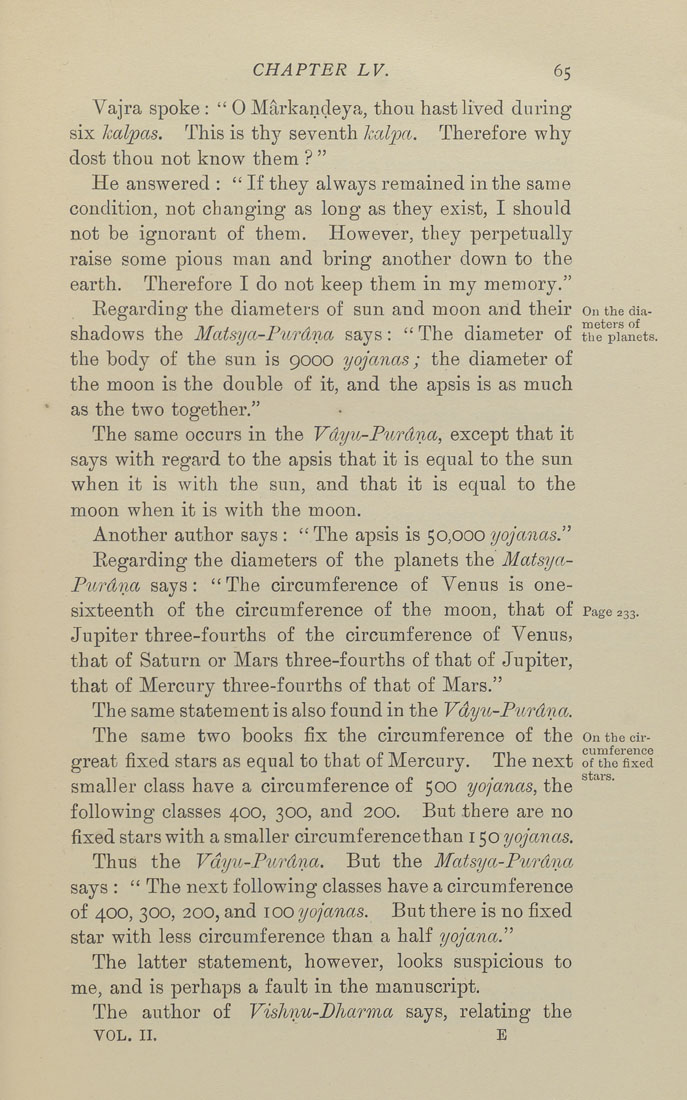CHAPTER LV. 65
Vajra spoke : " 0 Markandeya, thou hast lived during
six kalpas. This is thy seventh kctlpct. Therefore why
dost thou not know them ? "
He answered : " If they always remained in the same
condition, not changing as long as they exist, I should
not be ignorant of them. However, they perpetually
raise some pious man and bring another down to the
earth. Therefore I do not keep them in my memory."
Eegarding the diameters of sun and moon and their onthedia-
shadows the Mcttsyct-Purdna says: " The diameter of tiie planets.
the body of the sun is 9000 yojctncts; the diameter of
the moon is the double of it, and the apsis is as much
as the two together."
The same occurs in the Vdyu-Purdna, except that it
says with regard to the apsis that it is equal to the sun
when it is with the sun, and that it is equal to the
moon when it is with the moon.
Another author says : " The apsis is 50,000 yojanas.'^
Eegarding the diameters of the planets the Matsya-
Purdna says: "The circumference of Venus is one-
sixteenth of the circumference of the moon, that of Page 233.
Jupiter three-fourths of the circumference of Venus,
that of Saturn or Mars three-fourths of that of Jupiter,
that of Mercury three-fourths of that of Mars."
The same statement is also found in the Vdyu-Purdna.
The same two books fix the circumference of the onthecir-
great fixed stars as equal to that of Mercury. The next of the fixed
smaller class have a circumference of 500 yojanas, the
following classes 400, 300, and 200. But there are no
fixed stars with a smaller circumference than 150 yojctncts.
Thus the Vdyu-Purdna. But the Matsya-Pitrdnct
says : " The next following classes have a circumference
of 400, 300, 200, and 100 yojctnas. But there is no fixed
star with less circumference than a half yojanaJ'
The latter statement, however, looks suspicious to
me, and is perhaps a fault in the manuscript.
The author of Vishnu-Dharma says, relating the
VOL. II. E
|








